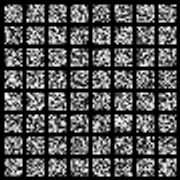Implementation of https://arxiv.org/abs/1501.00092 - Image Super-Resolution Using Deep Convolutional Networks (Original Caffe Model) on Holopix50k Stereo Dataset
- Pytorch > 1.4.0
- tqdm >= 4.42.1 (train progress bar can be found here)
- TensorboardX >= 2.0
- PIL.Image(Pillow) >= 7.0.0
- Scikit-image >= 0.16.2
- h5py >= 2.10.0
- Added SSIM, PSNR, and MSSIM as training and logging metrics.
- Trained on high resolution
(640 X 360) Train, (1280 X 720) Test)Holopix50k images.
Instructions to download Holopix50k can be found on Holopix50k repository (Paper). Training on 5000 images of Holopix50k with 120 X 78 patch and stride yields ~500,000 patches of size (120 X 120). Random crop patches can be decreased by altering size in preprocess.py. Output dataset is stored at output/<dataset.h5>
Note: Our crop sizes are significantly higher than original paper's size. Authors train with a crop size of 33 and stride 14, resulting in ~ 24,000 images from the 91-image dataset which has average resolution of (180X150). Moreover, we apply a gaussian kernel of a higher standard deviation (0.55 in paper vs 0.73 ours) Hence, our input images have a much lower quality compared to the original implementation and make our training more challenging.
SRCNN 9-5-5 was chosen due to nature of large resolution.
Chosen Network Settings: .
Training was performed under paper conditions for 100 epochs using MSE Loss as training loss. Training was stopped when Validation PSNR flattened at ~80.10.
SSIM was calculated during eval. Similarity score peaked at 0.99, thus suggesting that SSIM is not reliable for SR tasks.
- Saved Weights for training using original MSE Loss can be downloaded here
- Saved weights for training using our weighted loss can be downloaded here
We have also trained using a weighted loss function from 3 image reconstruction metrics
- Structural Similarity Index (SSIM)
- Peak Signal-to-Noise Ratio (PSNR)
- Mean Square Error (MSE)
We have weighted these according to result priority. Our current weighting is:
We have also trained out model using Peak Signal-to-Noise Ratio (PSNR Score) as a loss function. Below are our results:
-
Weighted Loss: We are able to reduce the heavy gaussian blurring with our weighted loss at the cost of loosing slight structural information.
-
PSNR Loss: Similar results as weighted loss.
MSE Trained Result Weighted Trained Result 

MSE Trained Result Weighted Trained Result 

We observed very similar results to our weighted loss after using 1-PSNR as a loss function. Please Zoom in to see slight structural changes.
MSE Trained Result PSNR Trained Result Original 


We visualize our trained Conv filters of size (9X9) (Trained with MSE Loss). We can identify that some filters are edge vs texture detectors. This is reflective of the original implementation's findings.
Save filters during training- Add accelerated SRCNN model with deconvolutions
Train with SSIM, MSSIM, PSNR opposed to MSE Loss specified in paper- Pretrain Y channel and CB, Cr channels for better results















